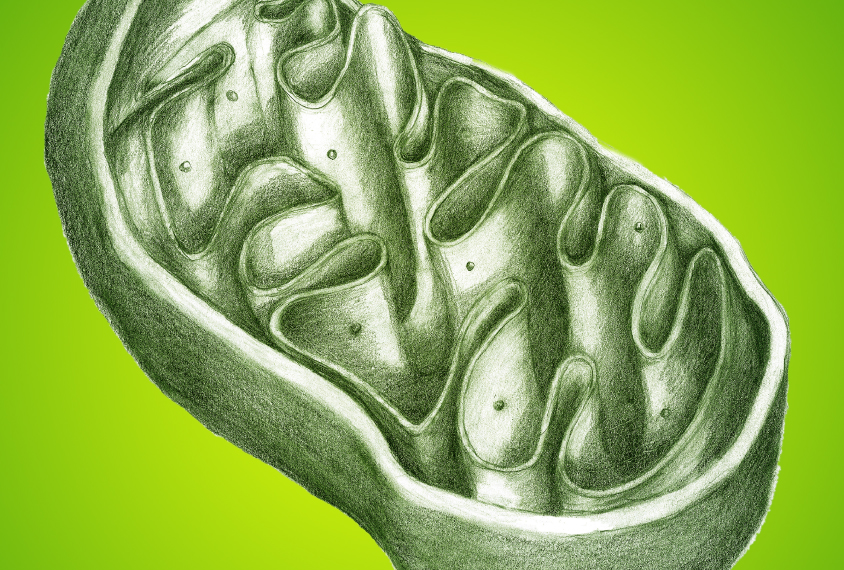
Mounting evidence links mitochondrial DNA to autism
Genetic variants that affect mitochondria, the organelles that power cells, may increase the risk of autism.
Several types of genetic alterations that affect mitochondria increase the risk of autism, two new studies suggest.
Mitochondria, the organelles that power cells, have a circular genome with 37 genes. People inherit their mitochondrial DNA from their mothers, so the DNA stays relatively consistent from one generation to the next.
As a result, people’s mitochondrial genomes fall into distinct groups, each of which has essentially the same DNA. Each of these so-called ‘haplogroups’ reflects an ancestral line. Haplogroups ‘M’ and ‘N,’ for instance, arose from women who left Africa for Eurasia about 65,000 years ago. There are nine known European haplogroups.
One of the new studies examined the link between autism and each of 12 mitochondrial haplogroups.
People with any of eight of these haplogroups — six European, one Native American and one Asian — have up to double the odds of having autism compared with those carrying the most common European haplogroup, the study revealed1.
The European haplogroups associated with autism together account for 55 percent of the European population. Because this type of mitochondrial variation is so common, it is likely to play a significant role in autism, says lead researcher Douglas Wallace, director of the Center for Mitochondrial and Epigenomic Medicine at the Children’s Hospital of Philadelphia.
“Our brains, which are 2 percent of our body weight, use 20 percent of all the mitochondrial energy in our body. So, a very subtle change in mitochondrial energy is going to radically affect the brain,” he says.
The second study, published February in Behavior and Brain Function, shows that people with autism have more deletions in their mitochondrial DNA than controls do2. These deletions are present in only some of the mitochondria in each cell.
Together, the studies hint that mitochondria play an important role in autism.
“These works could also encourage research for [autism] interventions that focus on improving mitochondrial function,” says Zhenglong Gu, associate professor of nutritional sciences at Cornell University in Ithaca, New York, who was not involved in either study. “It is important to see more effort in this direction.”
Second look:
Over the past five years, researchers have looked for mutations with a clear link to autism. These studies have mainly focused on the nuclear genome.
Wallace’s team analyzed mitochondrial DNA from 1,615 children with autism and 2,400 unaffected parents and siblings from the Autism Genetic Resource Exchange (AGRE), a database of information from families that have more than one child with autism.
In a 2009 study, a separate team compared mitochondrial sequences in AGRE against a reference genome to reveal 163 variants in the sequences3. However, the analysis compared mitochondrial DNA from the predominantly European sample with a reference genome of African ancestry.
Wallace and his colleagues reinterpreted the findings using a European mitochondrial genome as a reference. From this information, the researchers divided their participants into 28 mitochondrial haplogroups.
One of these haplogroups, dubbed HHV+, includes 1,792 people, 712 of whom have autism. This is the most common European haplogroup, comprising 44 percent of the participants. The researchers used HHV+ as the reference haplotype.
The researchers then compared the odds of having autism between people in the HHV+ group and those in the other 27 haplogroups. Eight of the other haplogroups are associated with increased odds of having autism. For example, of 368 participants carrying haplogroup J, 157 have autism. This represents a 2.18-fold increase in the odds of having autism compared with the HHV+ group. (This calculation controls for family structure, accounting for the fact that siblings with autism share nonmitochondrial risk factors for the condition.)
The findings appeared in the November issue of JAMA Psychiatry.
Power struggle:
None of the haplotypes are uniformly associated with autism, so mitochondrial DNA variants must work in combination with other mutations or environmental factors, says Cecilia Giulivi, professor of molecular biosciences at the University of California, Davis, who was not involved in either new study.
“The real question is the magnitude of the contribution to autism risk from mitochondrial DNA mutations. There’s no solid answer here,” says Michael Ronemus, research assistant professor at Cold Spring Harbor Laboratory in New York, who was not involved in the study.
Nuclear genes also regulate the function of mitochondria, independent of the mitochondrial genome. But genetic studies have not found a strong association between these genes and autism. As a result, the contribution of mitochondrial variation to autism must stem mainly from mutations in mitochondrial DNA, Ronemus says.
In the February study, researchers looked for missing stretches of mitochondrial DNA in 60 people with autism and 60 controls. These deletions turned up in 10 people with autism but only 2 controls, hinting that they increase the risk of autism.
The study is small, however, and the age and sex of the participants varies significantly. That makes its conclusions less convincing, Ronemus says.
In a 2016 study, Gu and his colleagues looked at spontaneous variation in mitochondrial DNA — meaning mutations that appear in only some of the thousands of copies of mitochondria in each cell — in 903 families with a single child with autism.
Children with autism are roughly twice as likely as their unaffected siblings to carry harmful, spontaneous mutations in their mitochondrial DNA, they reported4.
Wallace and his team are analyzing the same data to see whether certain mitochondrial haplotypes are associated with autism in that population.
References:
Recommended reading

Too much or too little brain synchrony may underlie autism subtypes

Developmental delay patterns differ with diagnosis; and more

Split gene therapy delivers promise in mice modeling Dravet syndrome
Explore more from The Transmitter

During decision-making, brain shows multiple distinct subtypes of activity

Basic pain research ‘is not working’: Q&A with Steven Prescott and Stéphanie Ratté
